Ishigaki Kebari
In his 2009 visit to the US, Dr. Ishigaki gave a slide show and on-stream demonstration of tenkara at the Catskill Fly Fishing Center and Museum. His visit seems to have been the spark that touched off the interest in tenkara in the US, coming just as Tenkara USA began selling the first tenkara rods available in the US. After his presentation, he said that what he likes most about tenkara is the simplicity.
He definitely takes that appreciation for simplicity to his choice of flies. Years ago he ran out of his favorite fly and went to a fly shop to get replacements. He saw this extremely simple fly, bought it, and found that he caught just as many fish with it as he had with his favorite.
From that experience, he came to the conclusion that the choice
of fly is not the most important factor in catching fish, the technique
is. And from then on, he mostly has fished just this fly. This one fly allows him to fish with many different techniques. A significant benefit, in Dr. Ishigaki's view, is that the fly is tied with inexpensive materials and is very quick to tie.
This is the fly Dr. Ishigaki demonstrated at the Museum in 2009. Everyone here in America calls it the Ishigaki Kebari. Dr. Ishigaki doesn't call it that. He would never name a fly after himself. I'm pretty sure he just calls it "kebari" which just means "fly" (feathered hook, actually). Most Japanese tenkara flies do not have specific names. Generally, the name we give a Japanese tenkara fly is actually just the region in Japan were that basic pattern style was traditionally tied.
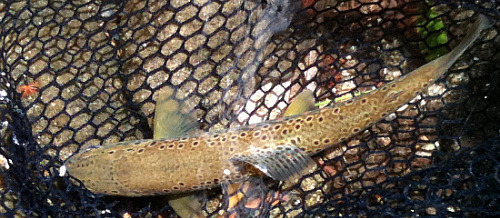 Ishigaki Kebari in the net with a brown trout
Ishigaki Kebari in the net with a brown troutThe Ishigaki Kebari is constructed with just a hackle feather and a thread body. When he tied his fly in the Catskills, he used brown rooster hackle and black thread. He also ties the same fly with a grey thread body and a grizzly rooster hackle. I asked him how he decides which color to fish with. He said it didn't matter, he just picks one.
I just saw a Shimano YouTube video featuring Dr. Ishigaki. It showed some of his flies, which had black bodies and grizzly hackle. Thus, there is a third variety (at least).
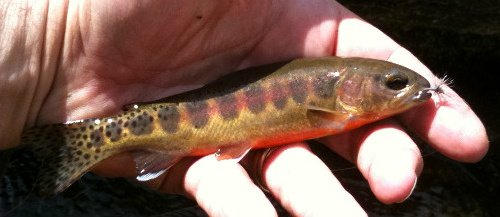 Golden Trout taken with a Gray/Grizzly Ishigaki Kebari
Golden Trout taken with a Gray/Grizzly Ishigaki KebariIshigaki Kebari Step-by-Step
The following sequence shows how Dr. Ishigaki ties his fly. In the past, I have often tied a fly that I called an Ishigaki Kebari but which was really nothing like Dr. Ishigaki's own flies. I have revised the sequence below to make it as close as I could to an accurate depiction of a true Ishigaki Kebari. To be as close as possible to the original, the fly should be as follows:
1. It should be tied on a straight shank hook.
2. The hook should be barbless or the barb should be bent down.
The hook shown in the sequence below is a size 12
Daiichi 1550
standard wet fly hook.
A Daiichi 1190 barbless dry fly hook
would be equally appropriate.
3. It should be tied with sewing thread, not fly tying thread. Dr.
Ishigaki uses thread he buys in a 99 yen shop (the equivalent of
our Dollar General). The fly shown below was tied with sewing
thread bought at Walgreens (a package 12 colors plus needles
for $5.49).
4. It should be tied with inexpensive rooster hackle.
Of course, you could use the fly tying thread and genetic hackle you already have. After all, Dr. Ishigaki favors simplicity and practicality, and buying new materials when you already have materials that would work is neither simple nor practical. Do use a strait shank hook though. The Ishigaki Kebari should always be tied on a strait shank hook.
1. Start your thread behind the eye and tie a head something like the one shown to the right. Dr. Ishigaki does not count wraps. He wraps until it looks right.
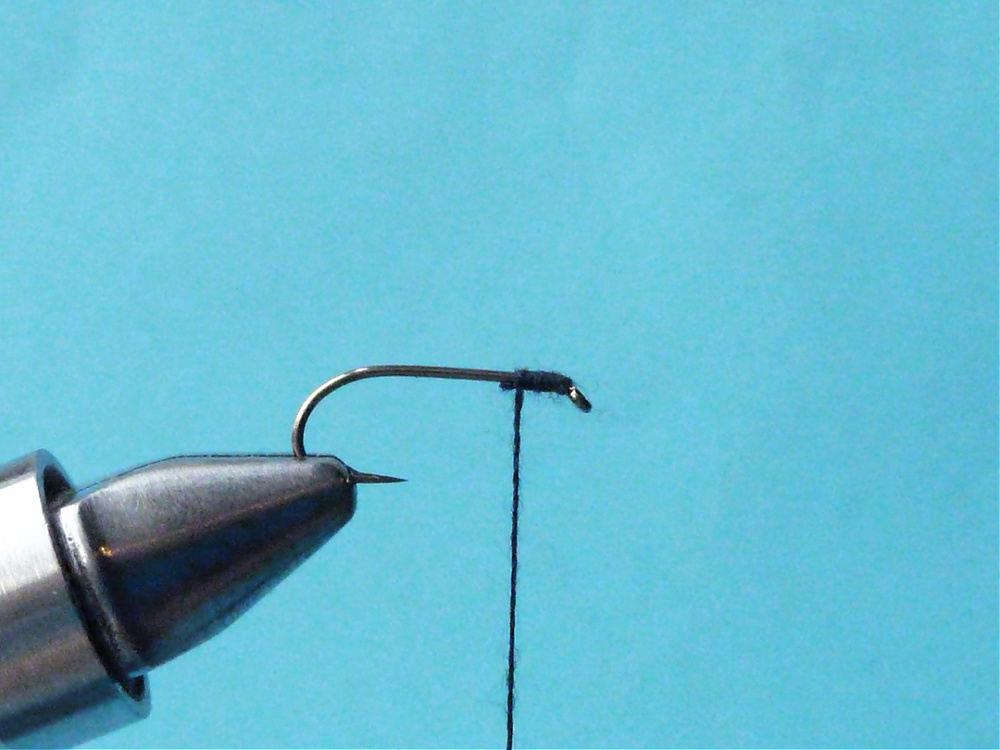
2. Cut a rooster feather two to three inches from the tip. Do not strip off any barbs. Tie it in with the concave side up and the end of the cut stem just behind the hook eye. Wrap the thread forward to cover the stem and then back to the tie in point.
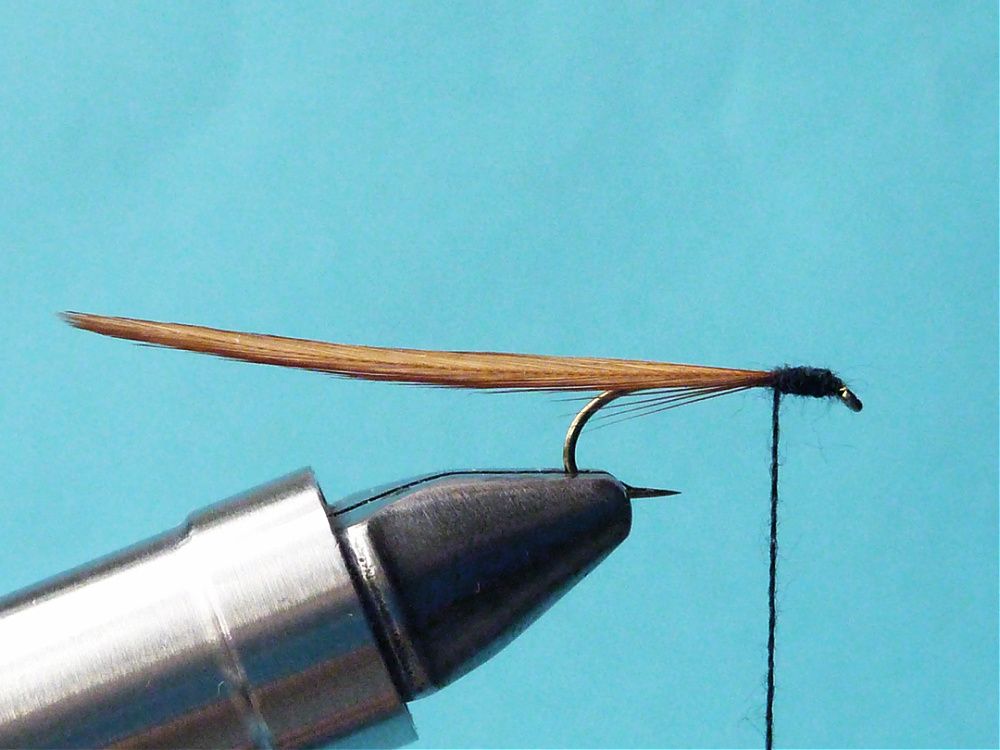
3. With your right hand, attach hackle pliers to the end of the feather and hold it straight up. Take the bobbin holder with your left had and pull it to the left, out of the way. Wrap the hackle directly behind the head, 3 to 5 turns. Dr. Ishigaki stated "3 or 4 turns" but I have seen him use 4 and I have seen him use 5. I have never seen him use 3.
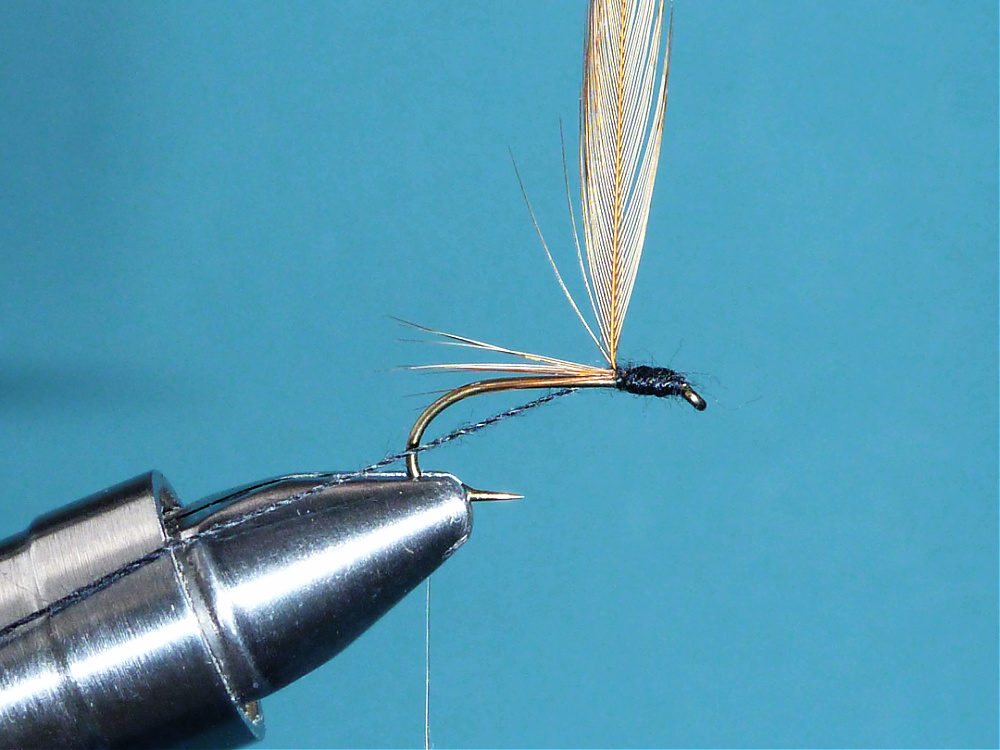
4. Following the wraps (4 in the fly shown), trap the hackle with the thread and wind a third to half way towards the bend. Clip off the excess feather (looks like a tail in the photo) and any trapped barbs.
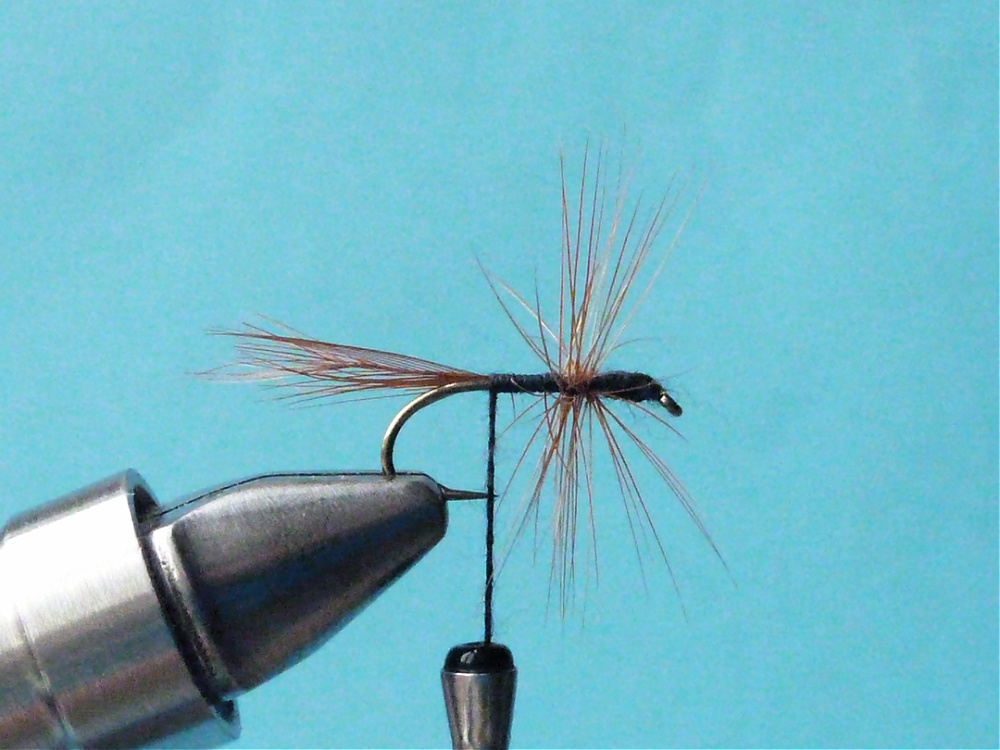
5. Wrap back to the hackle and do just enough wraps tight up against the hackle to prevent barbs from angling towards the bend. That should give most of the hackle barbs a very slight forward slant. Nearly all the versions of the Ishigaki Kebari you see on the internet have way too much forward slant.
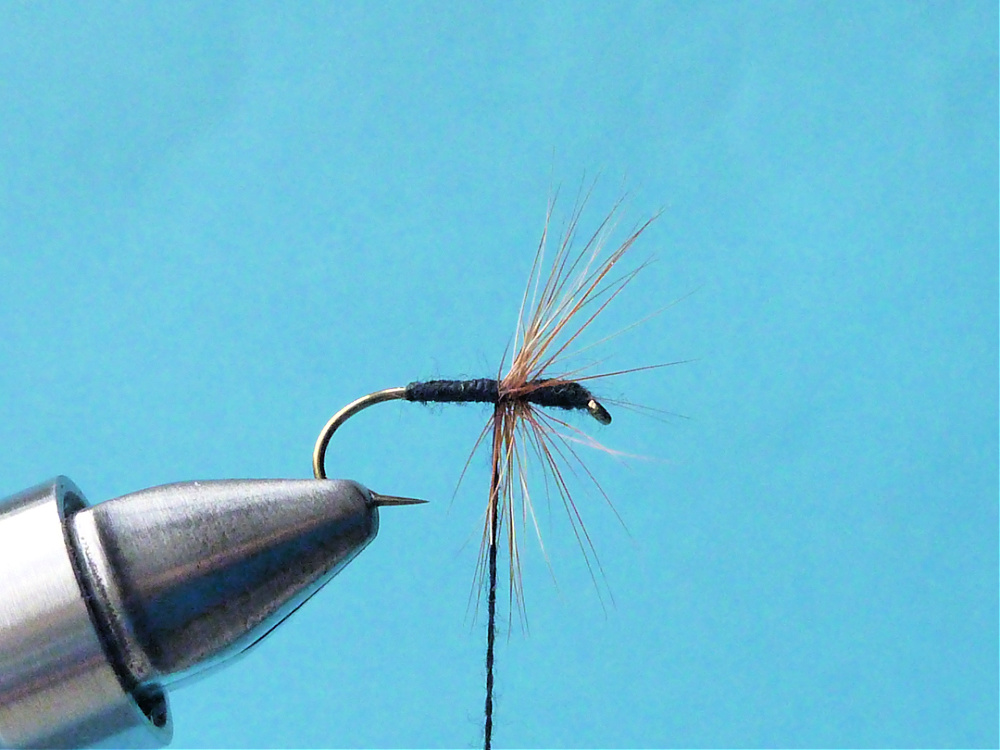
6. Wrap back and forth to form a slightly tapered body. When you have the shape you want, stop with the thread towards but not at the rear of the body. Do two half hitches at that spot, pull the thread snug and cut the excess.
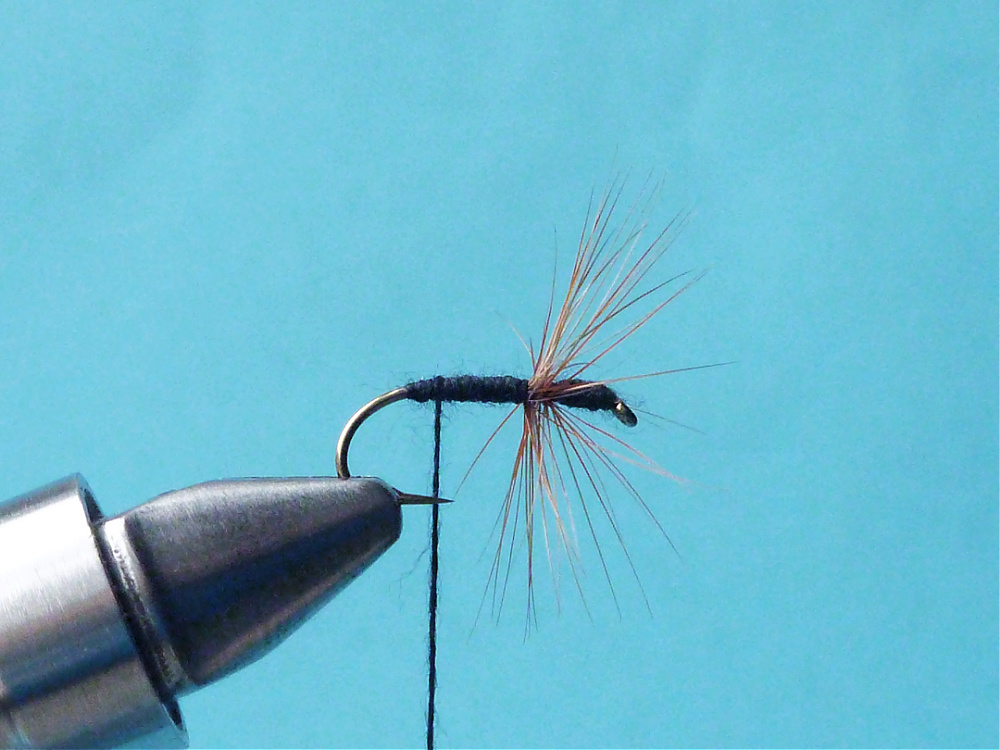
7. Use head cement to keep the half hitches from coming undone.
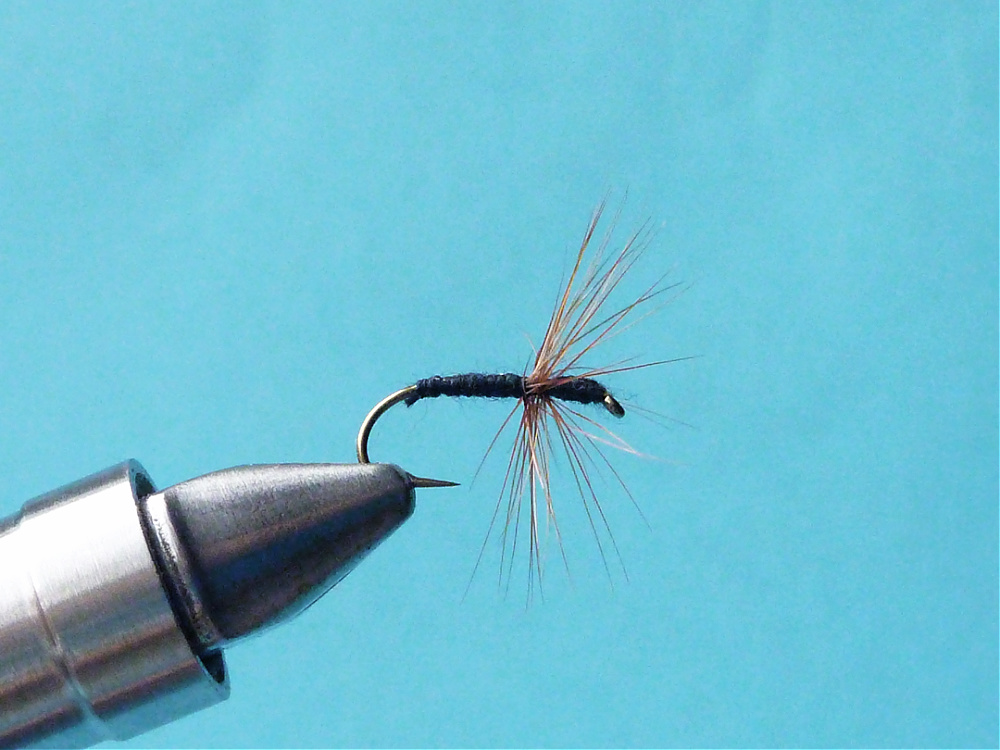
 Ishigaki Kebari - Black Body, Brown Hackle
Ishigaki Kebari - Black Body, Brown Hackle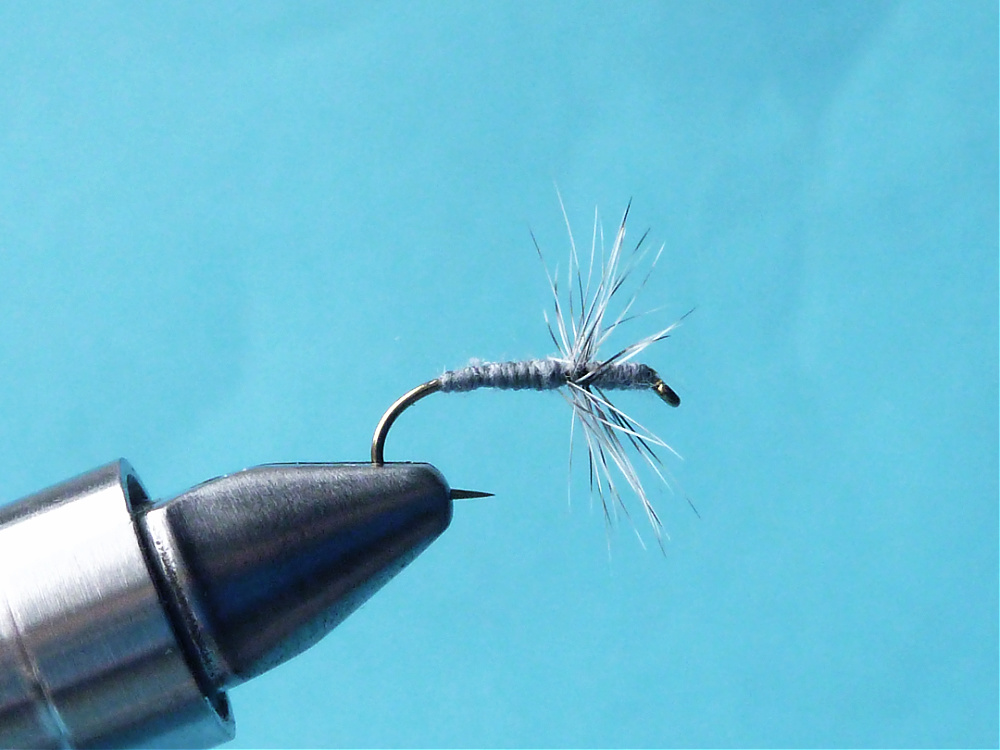 Ishigaki Kebari - Gray Body, Grizzly Hackle
Ishigaki Kebari - Gray Body, Grizzly HackleCompared to Dr. Ishigaki's own flies, the bodies are not as nicely tapered and the thread is too fuzzy. Of course, he has been tying the same fly for over 20 years now, so his are much better than mine.
In any event, the photos and description show the sequence he uses. Your flies, like mine, will not look exactly like his. I am confident they will catch fish, though.
TenkaraBum Home
> Tenkara Flies > Ishigaki Kebari
“The bitterness of poor quality remains long after the sweetness of low price is forgotten” - Benjamin Franklin
"Be sure in casting, that your fly fall first into the water, for if the line fall first, it scares or frightens the fish..." -
Col. Robert Venables 1662
As age slows my pace, I will become more like the heron.
We've all had situations where seriously chewed up flies kept catching fish after fish after fish. It is no sin to tie flies that come off the vise looking seriously chewed up.
Warning:
The hooks are sharp.
The coffee's hot.
The fish are slippery when wet.
Beware of the Dogma
What's in stock?
Suntech Tenkarakyo 40F Tenkara Rods
Daiwa Keiryu-X 39
Nissin Oni Tenkara Line
Coming Soon
December
Kurenai II AR 30F
Kurenai II AR 33F
Kurenai II AR 39F
Nissin Oni Line size 3
Nissin Oni Line size 3.5
TenkaraBum 33
TenkaraBum 36
TenkaraBum 40
Medium Rod Case
January
Furaibo TF39
Furaibo TF39TA
Latest Pages
If you enjoy spin fishing or baitcasting please visit my sister site Finesse-Fishing.com.


